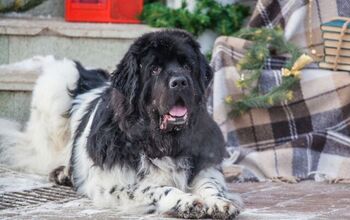Research Suggests Longer Nosed Dogs Live Longer

Yes, the flat-faced pooches we know and love have not only myriad health issues but also shorter lives.
Even those who have never owned a dog already know that smaller breeds tend to live longer than the bigger ones. This general nugget of knowledge is often picked up through first-hand experience as a pet owner or when researching the type of dog you want to adopt. Chihuahuas can age into their 20s without missing a beat (or mellowing out) while the larger Great Dane or Mastiff-type dog will typically top out after eight or nine years of life. Important stuff if you’re an older adult who is concerned their pet might outlive them or if you have concerns about your kids bonding with a larger dog who may pass away before they’re able to understand the concept of death and loss.
But recent studies published in the journal Scientific Reports, share that there’s more to your pet’s longevity than just their body size. Apparently, the shape of their face – specifically the length of their nose – also factors into the average lifespan of a dog.
Research conducted by Dr. Kirsten McMillan of DataSEA at Dogs Trust included stats gathered from 18 different organizations including breed registries, rescues and even pet insurance companies. It encompassed a whopping 584,734 pure- and crossbreed dogs – 284,734 of whom had already passed away (insurance stats, no doubt).
Already understanding that smaller dogs typically live longer than their larger counterparts, the team chose to take a deeper dive, looking for trends within the smaller dog categories. What they found was the common denominator amongst those enjoying a few extra years was having a longer, more pronounced beak. Breeds such as miniature dachshunds or spaniels actually lived a median lifespan of 14 years, where everyone’s fave French bulldog was closer to 9.8 years. In fact, brachycephalic breeds overall, had a median lifespan of just 11.2 years - 40% shorter than dogs with a bigger schnoz. While its never been a secret that flat-faced breeds tend to be prone to health issues including breathing difficulties, their actual lifespan was assumed to be in line with that of their fellow small breed dogs. Apparently, not so.
But here’s where it gets even more interesting because the team also found the median lifespan for purebred dogs was actually longer than that of crossbreeds; 12.7 years versus 12 years respectively. This discovery contradicts the long-accepted theory that crossbreeds are generally healthier and live longer because they have a more diverse genetic history than purebred dogs. In a nutshell, the wide variation in genes is less likely to support inherited, degenerative ailments such as hip dysplasia, luxating patella, heart disease and certain cancers - just a few of the issues that tend to get passed down the gene pool of purebred dogs.
That said, a healthy diet, regular vet check-ups, and appropriate exercise is the surest way to keep your pooch – flat-faced, pure-bred, or not – happy, fit, and with you for the long haul.

Sharing space with three seriously judgy Schnoodles and a feline who prefers to be left alone. #LivingMyBestLife
More by Mary Simpson























